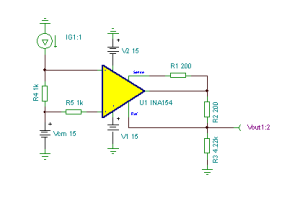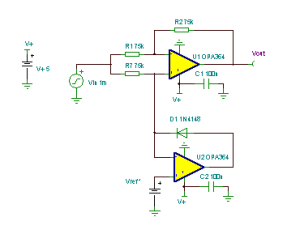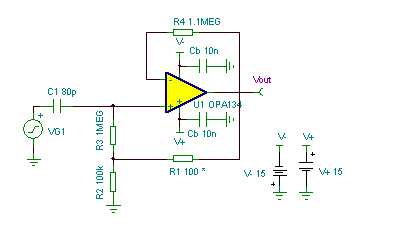INA154 With Gain-Current Shunt Amplifier
By converting the difference amplifier output to a current source using R2, voltage gain can be achieved with R3. R2 compensates the current sensing resistor R2 and increases the current source output impedance. Resistor R5 compensates for the current shunt resistance R4. Perfect compensation for R4 is not possible since the INA154’s internal resistor network is trimmed for precise ratios rather than absolute values. A buffer amplifier should be used on the output to prevent gain (loading) error. Bypass capacitors are not shown. (Circuit is created by Neil P. Albaugh, TI-Tucson)
INA154 With Gain-Current Shunt Amplifier circuit:

Online Simulation of the “INA154 With Gain-Current Shunt Amplifier” Circuit
The great feature of the TINA circuit simulator that you can analyze this circuit immediately with TINACloud the online version of TINA. Of course you can also run this circuit in the off-line version of TINA.
Click here to invoke TINACloud and analyze the circuit, or watch our tutorial video!
You can send this link to any TINACloud customers and they can immediatelly load it by a single click and then run using TINACloud.
Michael Koltai
www.tina.com




